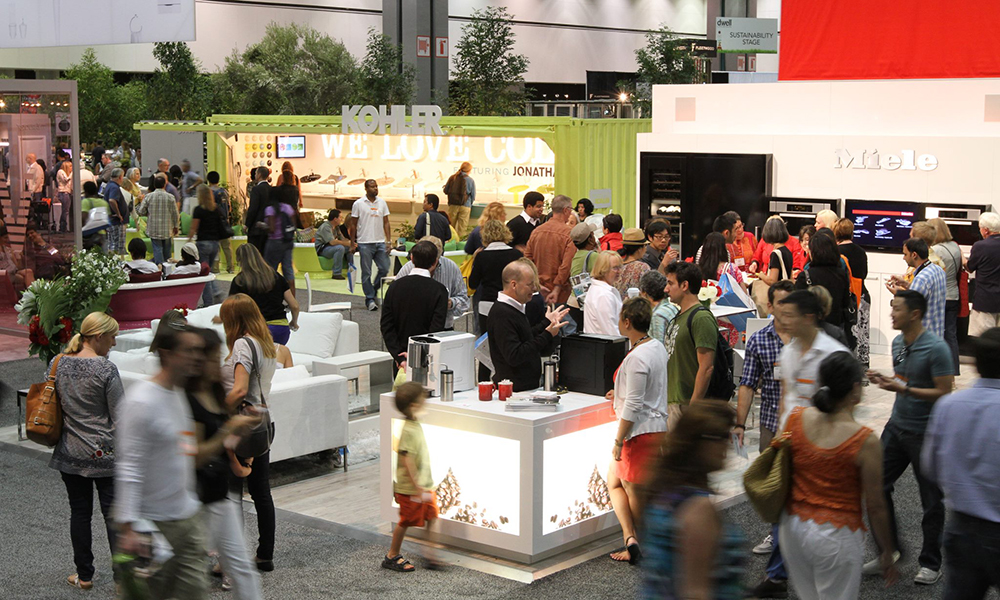
Tradeshow Design Creates Connections
Some of the most successful companies use design to develop deeper relationships with their consumers. Learn why doing the same at your next meeting or expo could result in your most loyal attendees yet.
Earlier this week I attended the Exhibition & Convention Executives Forum. The one-day event, held here in Washington, DC, brings together association and independent event executives to discuss meetings strategy with their peers and hear from those inside and outside the meetings space about trends affecting the industry.
Design is at the core of everything you do.
An idea that came up throughout the day was the need to create completely immersive experiences for attendees. One way to do that, said opening keynoter and President of Dwell Media Michela O’Connor Abrams, is by using design elements at your tradeshows and meetings to create connections.
“Design is at the core of everything you do,” she said. “You must create an engaging, immersive experience for each attendee—one that’s so on target and personalized to their needs that they feel like they are the only attendee there.”
That’s what Abrams and the rest of the Dwell team aspire to do as part of the Dwell on Design (DOD) Conference, held annually at the Los Angeles Convention Center. The conference, an extension of the Dwell media brand, has only been around for eight years, but is now the largest design event in the United States, and when it opens late next month, 400 exhibitors, 2,000 products, 200 speakers, and an estimated 30,000 attendees will hit the 200,000 square foot show floor over three days.
Abrams credits the event’s thoughtful layout and design for much of the show’s success. “Good design equals good business,” she said. DOD takes an approach similar to European tradeshows, where traditional numbered aisles are replaced by zones such as Dwell Outdoor, Tech Zone, and Kitchen & Bath—each constructed to immerse attendees into the experience of that particular area. Three stages are scattered throughout the floor and have a dedicated purpose—design innovation, sustainable design, and business of design. Also taking place on the show floor: demonstrations, design consultations, and the opening reception, among many other activities. “By piling everything into one well-thought-out, well-designed space, we really do create that immersive experience that allows exhibitors, designers, and consumers to not only connect to our brand but also to one another,” she said.
But Dwell is not the only brand using design to create connections with consumers. Abrams offered up green-cleaning-products company method and Virgin Atlantic Airways as two examples of businesses using design to attract what she calls “design-centric consumers,” and urged exhibition and convention organizers to do the same. Why? “Because consumers expect it, and if you understand these design-centric consumers, you’ll attract attendees who are loyal to you and your organization’s brand and events—and who will bring along more attendees with them,” she said.
Abrams shared findings from the Dwell Insights Group’s 2011 New Face of Affluence Tracking Survey, which created a profile of these consumers. Among the characteristics:
- They are self-directed and highly empowered.
- They determine the brands that define them—not the other way around.
- They are highly opinionated and share their views with others.
- They are likely to attend events that meet their design and experience standards.
“What it really comes down to is that it’s all about the experience. They will follow it every time,” she said. “Unfortunately the tradeshow industry doesn’t do it very well right now.”
Abrams says this is contributing to more independent industry shows popping up and having success—ones that are sometimes directly competing with association tradeshows. “Attendees want relationship-based shows where they get that connection to exhibitors in real time,” she says. If conference organizers are more thoughtful about creating an experience using elements of design, Abrams says they will attract attendees who will become powerful brand advocates.
How is your organization using design elements to create a more immersive experience for attendees? Please share in the comments.
Dwell on Design is a great example of a conference using design to help engage event-goers. (via the Dwell on Design Facebook page)






Comments